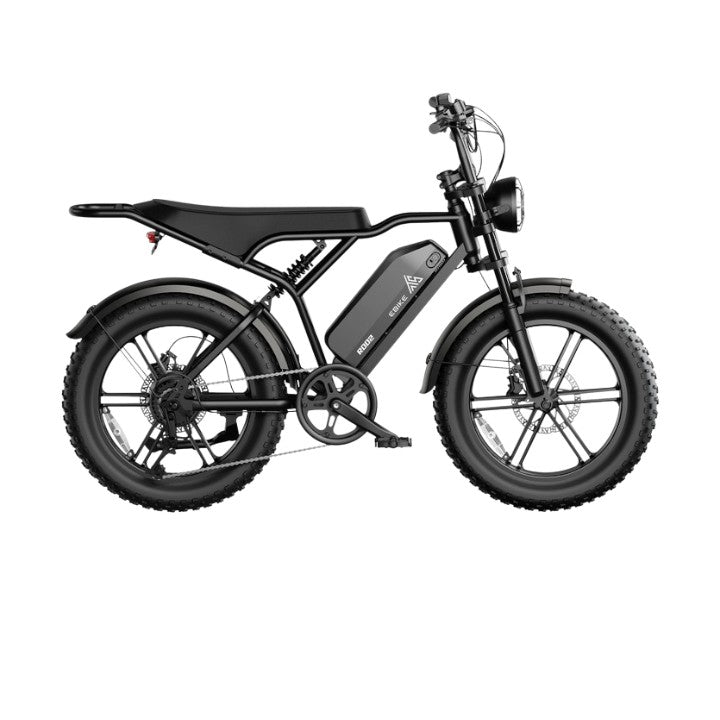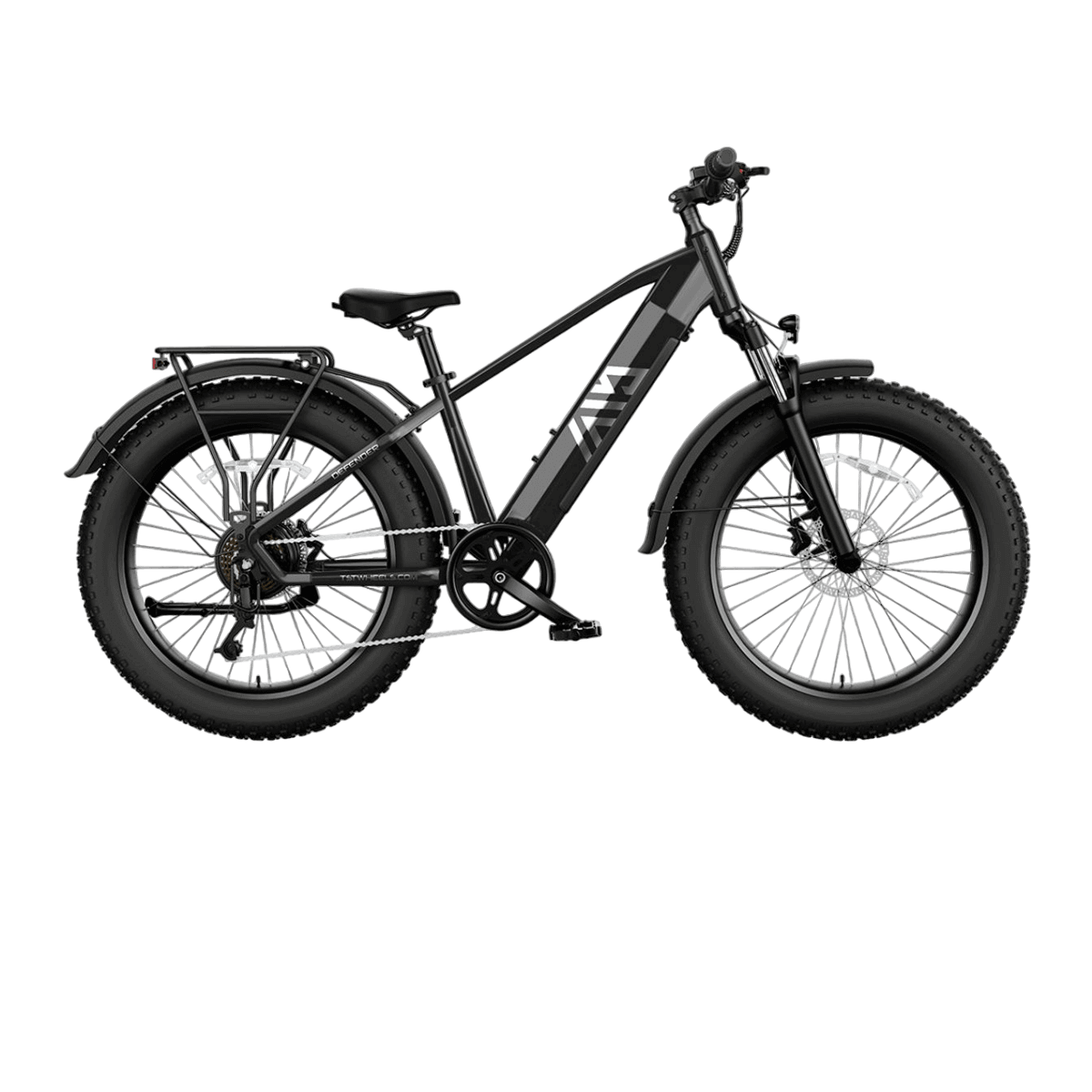A 1000W electric bike delivers powerful motor output ideal for riders seeking speed, hill-climbing ability, and versatility across terrains. These e-bikes typically reach speeds up to 35-40 mph and offer ranges of 40-60 miles per charge, balancing exhilarating performance with battery consumption. They suit commuters, off-road adventurers, and those wanting robust electric assistance on demanding rides.
What Is a 1000W Electric Bike and How Does It Work?
A 1000W electric bike features a motor rated at 1000 watts, providing significant power compared to lower-wattage models. This wattage translates to stronger acceleration, higher top speeds, and enhanced torque for climbing steep hills or navigating rough terrain. The motor is usually brushless and paired with a battery system (often 48V, 15-20Ah) designed to deliver sustained power output while managing heat and voltage stability. The bike’s controller regulates power delivery, balancing performance and battery life.
This power level makes 1000W e-bikes versatile for urban commuting, mountain trails, and off-road adventures. However, the increased motor strength leads to higher battery consumption and sometimes heavier bike weight, factors to consider when choosing your model.
How Fast Can 1000W Electric Bikes Go?
1000W electric bikes can reach impressive top speeds, typically between 35 to 40 miles per hour (56-64 km/h) on flat terrain. Some premium models equipped with dual batteries and advanced controllers can push speeds up to 60 km/h (about 37 mph). Speed depends on factors such as rider weight, terrain, wind resistance, and battery charge level.
While these speeds offer thrilling rides, riders must ensure their e-bike is equipped with adequate braking systems like hydraulic disc brakes to maintain safety at high velocities.
What Are the Advantages and Disadvantages of 1000W Electric Bikes?
The advantages of 1000W electric bikes include:
- Powerful motor output for rapid acceleration and hill climbing
- Versatility across terrains, from city streets to rugged trails
- Extended range capabilities, typically 40-60 miles per charge
- Enhanced riding experience with smooth power delivery
Disadvantages include:
- Increased battery consumption leading to shorter range under heavy use
- Heavier bike weight affecting portability and handling
- Potential legal restrictions in some regions limiting motor wattage or speed
- Higher initial cost compared to lower wattage e-bikes
Understanding these pros and cons helps riders select the right e-bike for their needs.
Which TST EBike 1000W Models Are Best for Different Terrains?
TST EBike offers two prominent 1000W models tailored to diverse riding conditions:
- 26-inch TST EBike Model: Designed for rough terrains such as snow and sand, this model features fat tires and a robust frame to handle off-road challenges with stability and power. Its 1000W motor excels in delivering torque for climbing and uneven surfaces.
- 27-inch TST EBike Model: Ideal for daily commuting and mountain biking, this model balances speed and maneuverability on paved roads and mixed terrain. The 27-inch wheels provide efficient rolling resistance and comfort for longer rides.
Both models incorporate high-quality batteries and controllers optimized for sustained 1000W output, ensuring reliable performance across various environments.
TST EBike Model Comparison Chart
| Feature | 26-inch Model | 27-inch Model |
|---|---|---|
| Terrain Suitability | Rough terrains (snow, sand) | Commuting, mountain biking |
| Wheel Size | 26 inches | 27 inches |
| Motor Power | 1000W | 1000W |
| Battery | 48V 15-20Ah | 48V 15-20Ah |
| Best Use | Off-road adventures | Mixed terrain and urban use |
| Weight | Heavier due to fat tires | Lighter, more agile |
How Do Battery and Range Affect 1000W Electric Bikes?
Battery capacity and efficiency directly influence the range of 1000W electric bikes. Typically, these e-bikes use 48V batteries with capacities ranging from 15Ah to 20Ah or dual batteries for extended range. On a full charge, riders can expect 40-60 miles, though this varies with terrain, rider weight, and power assist level.
Higher wattage motors consume more energy, especially when climbing hills or accelerating rapidly, which can reduce range. Efficient battery management systems and regenerative technologies can help optimize energy use.
Battery and Range Factors Chart
| Factor | Impact on Range |
|---|---|
| Terrain | Hills reduce range significantly |
| Rider Weight | Heavier riders decrease range |
| Speed | Higher speeds consume more battery |
| Assistance Level | Max assist drains battery faster |
| Battery Capacity | Larger Ah increases range |
Why Are 1000W Electric Bikes Subject to Legal Restrictions?
Due to their high power and speed capabilities, 1000W electric bikes often face regulatory limits. Many countries restrict e-bike motors to 250W or 500W for road use to ensure safety and compliance with vehicle laws. Riders should check local regulations before purchasing or riding a 1000W model to avoid fines or confiscation.
In some regions, 1000W e-bikes may be classified as mopeds or motorcycles, requiring licenses, registration, and insurance. Understanding these legal frameworks is essential for responsible ownership.
Buying Tips
When purchasing a 1000W electric bike, consider these key points:
- Match the bike to your terrain: Choose the 26-inch TST EBike model for rough, off-road conditions and the 27-inch model for commuting and mixed terrain rides.
- Battery capacity and range: Opt for batteries with at least 15Ah capacity or dual battery setups if longer range is needed.
- Safety features: Ensure hydraulic disc brakes and durable tires are included for high-speed control.
- Weight and portability: Consider the bike’s weight relative to your ability to transport or store it.
- Legal compliance: Verify local e-bike regulations regarding motor wattage and speed limits.
- Warranty and support: Select brands like TST EBike that offer quality control and customer service based on consumer feedback.
These tips help ensure you get a 1000W electric bike that fits your lifestyle and riding goals.
Prepare for a transformative commuting experience with the strength and capability of a 1000W electric bike! This e-bike offers an extraordinary ride that will leave you exhilarated. Whether you're tackling challenging inclines or seeking ultimate speed, the 1000W electric bike is your ideal companion. In this all-encompassing guide, we will explore every detail about these potent two-wheelers - from their range and uphill capabilities to their advantages and disadvantages. So secure your helmet tightly as we delve into the realm of 1000W e-bikes!
E-Bike Watts
E-bike wattage indicates motor power, influencing speed, torque, and terrain capability. Higher wattage, like 1000W, offers stronger acceleration and better hill climbing but may consume more battery. Lower wattage, such as 250W or 500W, is suitable for flat terrains and longer rides due to better energy efficiency.
Watts, in simple terms, measure the power output of an electric bike's motor. The higher the wattage, the more powerful the motor and the greater assistance it provides to the rider. E-bikes typically range in wattage from 250 watts to 750 watts, with some high-performance models reaching even higher levels.
The wattage of an e-bike directly affects its speed and climbing ability. A higher wattage motor can propel the bike at faster speeds and assist the rider in conquering steep hills and challenging terrains. However, it's important to note that higher wattage motors consume more battery power, resulting in reduced overall range.
When choosing an e-bike, it's crucial to consider your specific needs and preferences. If you primarily plan to use your e-bike for commuting or leisurely rides on flat terrain, a lower wattage motor may suffice. On the other hand, if you frequently encounter hilly areas or desire a more robust and exhilarating riding experience, a higher wattage motor would be more suitable.
It's worth mentioning that e-bike wattage regulations may vary by country or region. Some jurisdictions may have restrictions on the maximum wattage allowed for road use, while off-road or mountain e-bikes may have different regulations. It's essential to familiarize yourself with the local laws and regulations before purchasing an e-bike.
1000W Electric Bike
A 1000W electric bike features a powerful motor delivering robust performance, ideal for off-road adventures and steep inclines. It provides higher speeds and torque compared to lower-wattage e-bikes, making it suitable for riders seeking enhanced power and versatility in various terrains.
When it comes to electric bikes, wattage plays a significant role in determining its performance. And if you're looking for an e-bike that offers a perfect balance between power and efficiency, the 1000W electric bike might just be your ideal choice.
With its impressive 1000 watts of power, this e-bike can provide an exhilarating riding experience like no other. Whether you're cruising through city streets or tackling challenging terrains, the 1000W electric bike ensures smooth acceleration and effortless speed.
But how far can this beast go on a single charge? Well, that depends on various factors such as terrain conditions, rider weight, and speed. On average, you can expect a range of around 40-60 miles with a fully charged battery. However, keep in mind that using higher assistance levels or climbing steep hills may decrease the overall range.
Speaking of hills... Can a 1000W electric bike climb them effortlessly? Absolutely! Thanks to its powerful motor and torque capabilities, conquering uphill gradients becomes significantly easier with this e-bike. You'll feel like the king or queen of mountains as you effortlessly ascend those inclines while leaving traditional pedal-powered bicycles behind in awe.
1000W E-Bike [PROS + CONS]
Pros: Enhanced power for climbing hills and off-road trails, higher top speeds, and better acceleration. Cons: Increased battery consumption leading to shorter range, heavier weight affecting portability, and potential legal restrictions in certain areas due to power limits.
When it comes to electric bikes, a 1000W e-bike packs quite the punch. But like any other product, there are pros and cons to consider before making your purchase.
Let's start with the pros. One of the biggest advantages of a 1000W e-bike is its power. With this wattage, you can expect some serious speed and acceleration on both flat surfaces and uphill climbs. It's perfect for those who want an extra boost during their rides or for tackling hilly terrains.
Another benefit is the range that a 1000W e-bike offers. While it may vary depending on factors such as rider weight and terrain, you can usually travel several miles on a single charge. This makes it ideal for longer commutes or exploring new areas without worrying about running out of battery.
Additionally, a 1000W e-bike provides versatility in terms of usage. Whether you're using it for daily commuting, recreational purposes, or even off-road adventures, this wattage gives you enough power to handle different terrains with ease.
Now let's talk about the cons. Due to its higher wattage motor and increased power consumption, a 1000W e-bike may have shorter battery life compared to lower-wattage options. This means more frequent charging sessions if you plan on using it extensively.
Moreover, with more power comes increased weight. A 1000W e-bike tends to be heavier than lower-wattage models due to its larger motor size and additional components needed to support that power output. This can make maneuvering and transporting the bike more challenging.
Noise levels might be something worth considering when opting for a higher-wattage e-bike like this one. The powerful motor may generate more noise during operation compared to lower-powered counterparts which could potentially impact your riding experience in terms of comfort.
1000W e-bike offers impressive power and range, making it the perfect choice for those who want an extra boost while riding or tackling hilly terrains. However, its short battery life and increased weight may be drawbacks to consider before making a purchase.
Best 1000w Electric Bikes
Top-rated 1000W e-bikes include:
-
Ariel Rider Kepler: Features fat tires and a 1000W motor for all-terrain performance.
-
Mokwheel Obsidian: Offers solar charging, 28 mph speed, and an 80-mile range.
-
QuietKat Apex Pro: Designed for rugged adventures with a 1000W motor and durable build.
As we wrap up this guide on 1000W electric bikes, let's take a look at some of the best options available in the market. These e-bikes combine power, performance, and reliability to provide an exceptional riding experience.
The TST Flyer sports a 1000W Bafang hub motor with 45 Nm of torque, leaving plenty on the table for going fast. A 54.6V battery and controller ensure you can reach max speed in just a few seconds.
The 27’’*2.25″ puncture-resistant slim tires and an 80 mm-travel air suspension fork give this bike a smooth ride quality that eats up bumpy pavement and handles light off-roading.
Other valuable features include powerful hydraulic disc brakes for stopping the heavy 71.32 lb chassis, an ample 7-speed shifter, and a bright headlight.
2. Aventon Pace 500: The Aventon Pace 500 features a sleek design and powerful motor that can reach speeds up to 28 mph. Its range of up to 40miles makes it ideal for longer rides.
3. Cyrusher XF800: This e-bike boasts both style and power with its full suspension frame and high-performance components. The Cyrusher XF800 can go as fast as 28mph and has a range of approximately 50 miles.
Conclusion
Remember, choosing the best electric bike ultimately depends on your specific needs and preferences. Consider factors such as terrain, distance requirements, budget, and desired features before making your decision.
Whether you're looking for an e-bike to conquer hilly terrains or simply enjoy faster commuting speeds, a powerful option like the ones listed above will surely enhance your riding experience.
So why wait? Get ready to embark on thrilling adventures with these incredible high-powered electric bikes!













Leave a comment
All comments are moderated before being published.
This site is protected by hCaptcha and the hCaptcha Privacy Policy and Terms of Service apply.